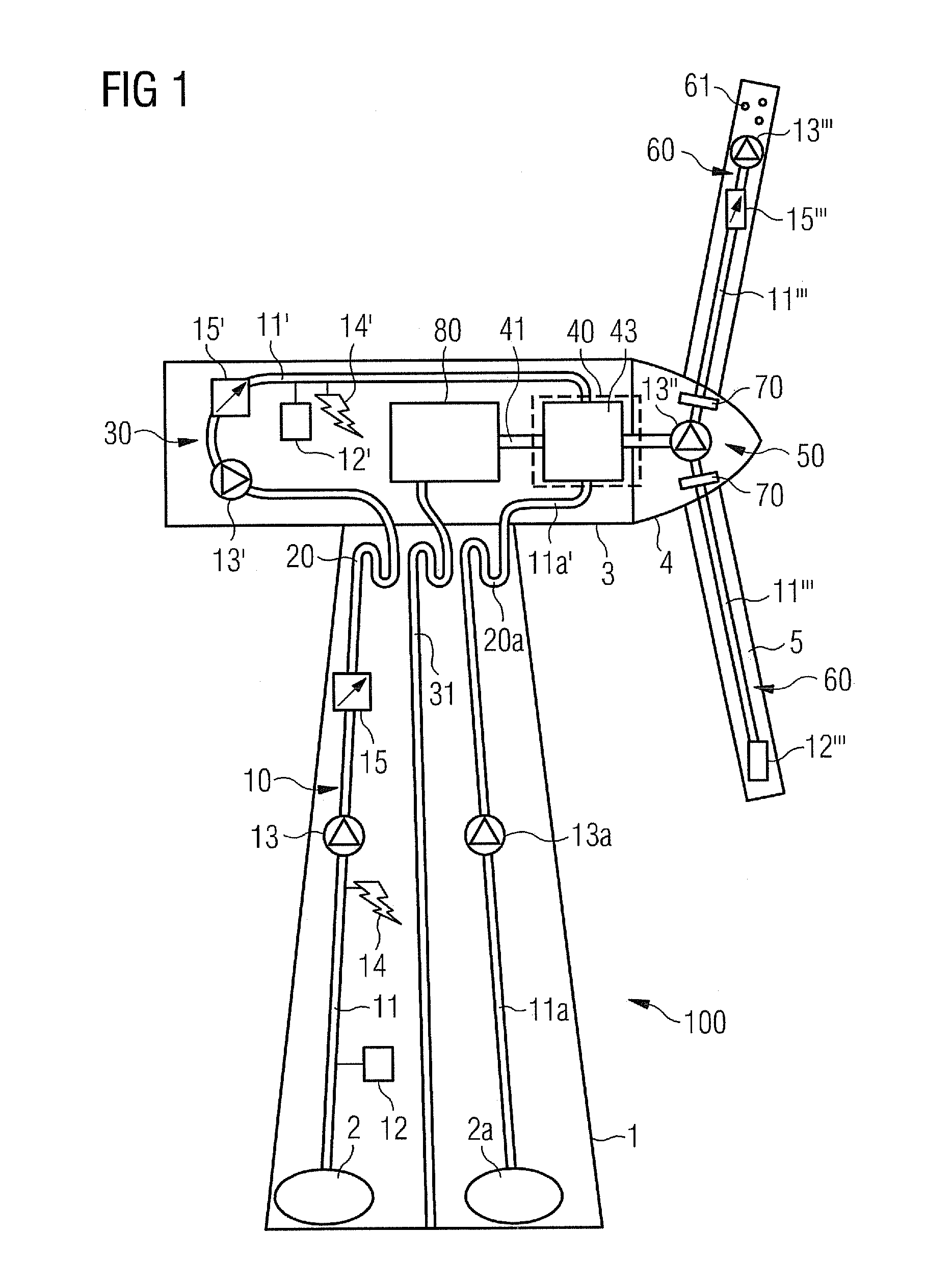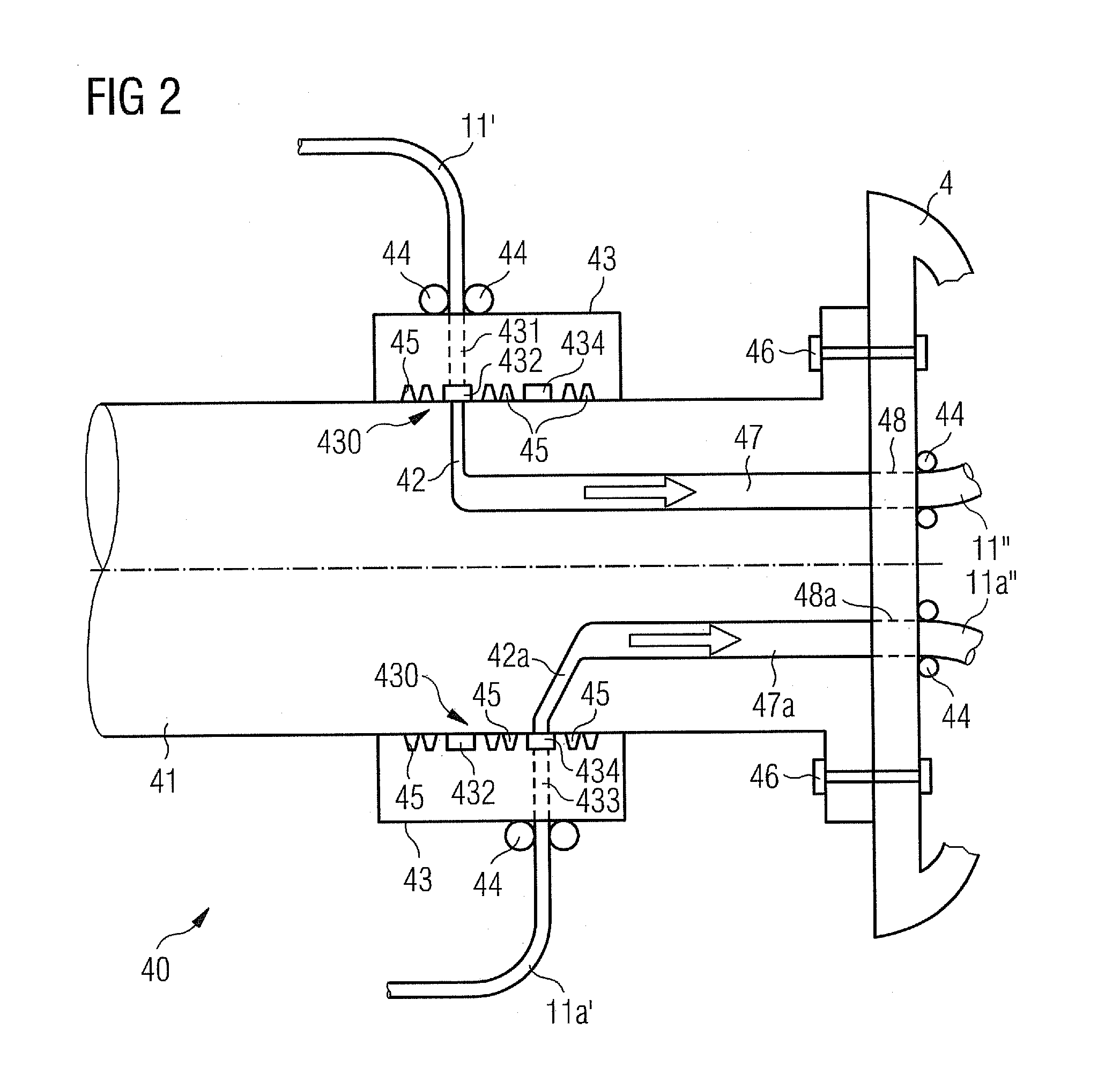Wind turbine with liquid medium distribution system
a technology of liquid medium and wind turbine, which is applied in the direction of marine propulsion, vessel construction, greenhouse gas reduction, etc., can solve the problems of time-consuming and expensive manual distribution of liquid medium, and achieve the effect of convenient manufacture and convenient diversified design of the fourth distribution sub-system
- Summary
- Abstract
- Description
- Claims
- Application Information
AI Technical Summary
Benefits of technology
Problems solved by technology
Method used
Image
Examples
Embodiment Construction
[0030]FIG. 1 shows an embodiment of a wind turbine according to the present invention. The wind turbine 100 comprises a tower 1, a nacelle 3 being rotatable supported by the tower 1, and a hub 4 being rotatable supported by the nacelle 3. Blades 5 are arranged on and fixed to the hub 4. The mentioned elements are conventional elements of a wind turbine 100 and will as such thus not be illustrated in more detail hereinafter. Furthermore, a normal operation of the wind turbine 100 is not in the focus of the invention and will thus also not be described in detail hereinafter. Only those items, elements and systems that are relevant to the invention will be elucidated in the following description.
[0031]Inside or outside (not shown) of the tower 1 is a source 2, 2a of liquid. Though explicitly two sources 2, 2a are shown in FIG. 1, it is possible that only one or more than two sources 2, 2a are arranged in the context of the invention. The term “source” is used generically in the context...
PUM
 Login to View More
Login to View More Abstract
Description
Claims
Application Information
 Login to View More
Login to View More - R&D
- Intellectual Property
- Life Sciences
- Materials
- Tech Scout
- Unparalleled Data Quality
- Higher Quality Content
- 60% Fewer Hallucinations
Browse by: Latest US Patents, China's latest patents, Technical Efficacy Thesaurus, Application Domain, Technology Topic, Popular Technical Reports.
© 2025 PatSnap. All rights reserved.Legal|Privacy policy|Modern Slavery Act Transparency Statement|Sitemap|About US| Contact US: help@patsnap.com



